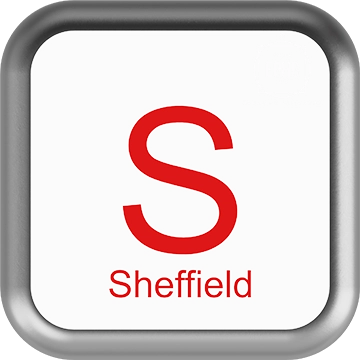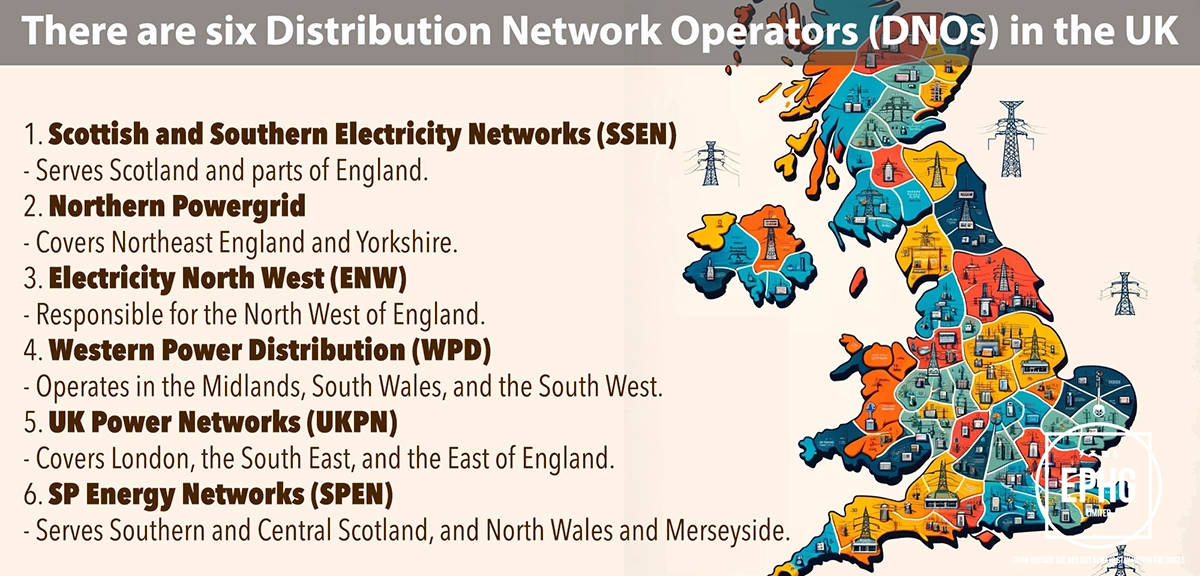
S Postcodes for Utilities & Services in Sheffield
Introduction: The S postcode area encompasses Sheffield and its diverse regions, offering a comprehensive guide on utility services such as water and electricity. This section provides insights into the local infrastructure, aiming to support residents and newcomers with valuable information.
Water in Sheffield
Where does the water supply come from in Sheffield, and are there concerns about water shortages?
The heart of Sheffield's water supply pulsates from its storied rivers: the River Sheaf, which gave Sheffield its name, and the River Don, winding through the city's industrial landscape. Beyond these, a network of reservoirs, including the picturesque Peak District's Ladybower, Derwent, and Howden, play a crucial role in quenching Sheffield's thirst. While Sheffield's water supply is typically robust, thanks to these natural and man-made sources, it is not immune to challenges. The region faces potential stress from factors like climate change, which can lead to unpredictable rainfall patterns, and urban development, which increases demand. Water providers and local authorities engage in meticulous planning and conservation efforts to mitigate these risks, promoting sustainable usage among residents to ensure a steady supply throughout the year.
What about the quality and hardness of Sheffield's water, and its impact on health?
Sheffield's water landscape is as varied as its geography, with water hardness levels fluctuating between soft to moderately hard. This variation stems from the journey water takes through different terrains, from the peaty moors of the Peak District to the more urban areas. Sheffield's water is thoroughly tested and treated to ensure it meets stringent health and safety standards, safeguarding against contaminants. While water hardness is a consideration—primarily due to its potential to scale household appliances—Sheffield's water is generally not detrimental to health. In fact, the moderate levels of minerals such as calcium and magnesium can contribute beneficially to dietary needs. However, for residents with specific health conditions or dietary requirements, it's advisable to consult healthcare providers for personalized advice. The city remains committed to providing water that is not only safe and clean but also conducive to the well-being of its communities.
Electricity in Sheffield
Where does the electric supply come from in Sheffield and what is the future of energy there?
The electric supply in Sheffield mainly comes from a blend of traditional and renewable sources. The city, historically powered by coal and natural gas, is transitioning towards greener alternatives. Sheffield's location near areas of natural beauty and resources has facilitated the growth of renewable energy sources, such as wind and solar farms surrounding the region. Moreover, initiatives like the Sheffield Renewables project and biomass facilities are pivotal in the city's energy transition. The future of energy in Sheffield is decidedly green, with investments in renewable resources and innovative technologies continuously growing. The aim is to reduce dependence on fossil fuels, decrease carbon emissions, and promote sustainable energy usage throughout the city, reflecting Sheffield's commitment to becoming an environmentally friendly urban area.
What are Sheffield's plans for sustainable heating solutions?
Sheffield is advancing towards sustainable heating solutions with initiatives aimed at reducing the city's carbon footprint and improving energy efficiency. One such project is the district heating network, which utilizes waste heat from energy production to provide heating and hot water to local homes and businesses. This system not only conserves energy but also significantly reduces greenhouse gas emissions compared to conventional heating methods. The city is exploring further innovations, including the adoption of heat pumps and the potential integration of geothermal energy sources. As part of the UK's wider ambition to decarbonize heating, Sheffield is investigating the feasibility and scalability of these solutions to ensure they can meet the needs of its diverse population while aligning with environmental targets.
How is wastewater managed in Sheffield?
Wastewater management in Sheffield is a critical component of the city's infrastructure, aimed at protecting both public health and the environment. The city's wastewater undergoes extensive treatment at facilities like the Blackburn Meadows Wastewater Treatment Works. Here, innovative processes are employed to remove contaminants, ensuring the water released back into the natural environment, such as the River Don, meets strict regulatory standards. The facility not only focuses on the purification of wastewater but also contributes to the city's renewable energy targets by generating biogas from sewage treatment processes. Sheffield continues to invest in advanced wastewater treatment technologies and infrastructure improvements to cope with the demands of its growing population and to safeguard its waterways for future generations.
Regions and Services:
The S postcode covers a diverse landscape, extending from the bustling urban environment of Sheffield city centre to the scenic outskirts and neighboring towns. Key regions within this area include:
- Sheffield City Centre: A hub of commercial and residential activity, where the infrastructure for electricity, gas, and water services is highly developed and continually upgraded to meet modern standards.
- Rotherham, Barnsley, and Doncaster: These towns blend historic charm with modern amenities, offering a comprehensive range of utilities and services to accommodate their growing populations and industrial activities.
- Chapeltown, Dronfield, and Worksop: Areas that are experiencing growth and are increasingly incorporating green energy solutions into their existing utility frameworks, reflecting a move towards sustainability.
- Hope Valley, Dinnington, and Wath-upon-Dearne: Picturesque regions that are becoming more connected in terms of utilities while maintaining their rural character and embracing environmentally friendly initiatives.

Regions within the S Postcode
Sheffield City Centre and Surrounding Areas
- S1: Sheffield City Centre - Known for its shopping districts, cultural venues, and urban nightlife.
- S2: Arbourthorne, Heeley, Highfield - Diverse residential areas with parks and community facilities.
- S3: Broomhall, Burngreave, Neepsend - Areas with a rich history and vibrant community projects.
- S4: Grimesthorpe, Pitsmoor - Residential neighborhoods with local amenities and green spaces.
- S5: Firth Park, Shiregreen, Southey - Suburban areas with parks and shopping facilities.
- S6: Hillsborough, Walkley, Fox Hill - Known for their local markets, parks, and sporting events.
- S7: Abbeydale, Nether Edge, Millhouses - Attractive residential areas with local businesses and parks.
- S8: Batemoor, Beauchief, Greenhill - Suburban areas with a blend of residential housing and nature.
Greater Sheffield and Surrounding Regions
- S9: Darnall, Tinsley, Wincobank - Industrial and residential areas with historical significance.
- S10: Broomhill, Broomhall, Crookes - Areas known for their vibrant student population and parks.
- S11: Ecclesall, Endcliffe Park, Greystones - Popular residential areas with parks and cafes.
- S12: Birley, Gleadless, Frecheville - Suburban zones with family homes and community amenities.
- S13: Handsworth, Richmond, Woodhouse - Residential areas with historical sites and green spaces.
South Yorkshire and Derbyshire Borders
- S14: Gleadless Valley - Predominantly residential area with local services and parks.
- S17: Dore, Totley, Bradway - Affluent suburbs on the edge of the Peak District with scenic views.
- S18: Dronfield, Coal Aston - Towns and villages known for their community feel and natural surroundings.
- S20: Westfield, Waterthorpe, Sothall - Suburban developments with retail and leisure facilities.
- S21: Eckington, Killamarsh, Renishaw - Combining rural charm with access to local amenities.
- S25: Anston, Dinnington, Laughton-en-le-Morthen - Areas with a mix of residential and rural environments.
- S26: Aston, Aughton, Swallownest - Suburban areas with family-friendly communities.
- S35: Chapeltown, Ecclesfield, High Green - Northern suburbs with a blend of urban and rural lifestyles.
- S36: Penistone, Stocksbridge, Thurgoland - Towns and villages in close proximity to the Pennines and nature reserves.
- S40: Chesterfield Town Centre - Known for its historic market and Crooked Spire church.
- S41: Brampton, Hasland - Residential areas with local businesses and community facilities.
- S42: Grassmoor, Holymoorside, New Tupton, Wingerworth - Combining rural settings with local amenities.
- S43: Brimington, Staveley - Areas with industrial history and residential development.
- S44: Bolsover, Calow, Duckmanton, Scarcliffe - Known for their historic sites and countryside.
- S45: Clay Cross, Pilsley - Towns with a mix of industrial history and rural charm.
- S60: Rotherham, Brinsworth, Catcliffe - Urban and suburban areas with cultural and recreational facilities.
- S61: Greasbrough, Kimberworth, Rockingham, Thorpe Hesley - Residential areas with green spaces and amenities.
- S62: Rawmarsh, Wentworth - Suburban communities with historical attractions and nature.
- S63: Goldthorpe, Thurnscoe, Wath-upon-Dearne - Towns with a rich industrial heritage and community spirit.
- S64: Mexborough, Swinton - Areas known for their local markets and community activities.
- S65: Herringthorpe, Ravenfield, Thrybergh - Residential zones with parks and leisure facilities.
- S66: Bramley, Hellaby, Maltby, Wickersley - Combining suburban living with countryside access.
- S70: Barnsley Central, Birdwell, Stairfoot, Worsbrough - Urban center and surrounding areas with cultural and historical sites.
- S71: Ardsley, Athersley, Monk Bretton, Royston - Residential and suburban communities with local amenities.
- S72: Brierley, Cudworth, Grimethorpe, Shafton - Villages and towns with community focus and rural surroundings.
- S73: Brampton, Darfield, Wombwell - Featuring local heritage and community activities.
- S74: Elsecar, Hoyland, Jump - Areas with historical industrial sites and residential communities.
- S75: Dodworth, Gawber, Mapplewell, Pogmoor - Suburbs and villages known for their green spaces and local facilities.
- S80: Worksop, Creswell, South Worksop, Whitwell - Known for their natural beauty and proximity to Clumber Park.
- S81: Blyth, Carlton-in-Lindrick, Langold, North Worksop - Combining rural charm with community amenities.




